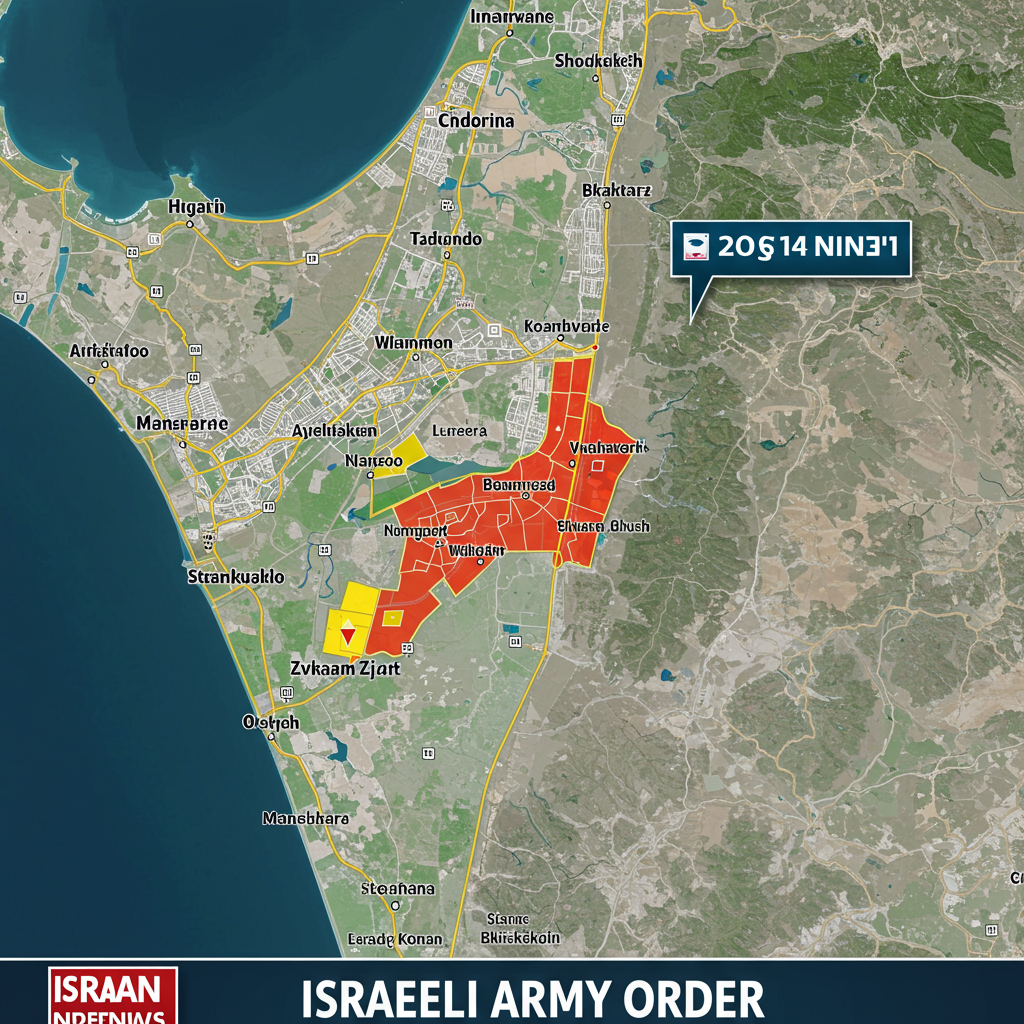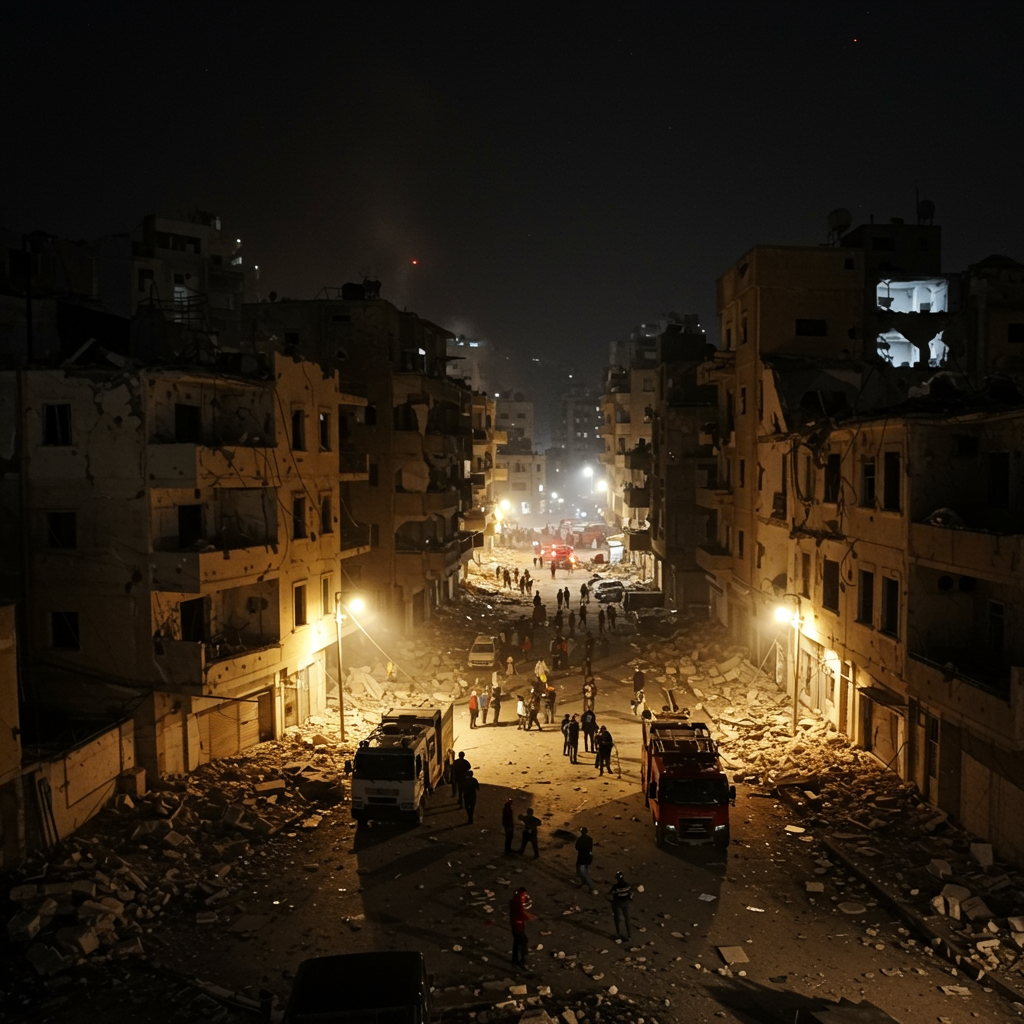Breaking reports indicate the Israeli military has issued an urgent evacuation order for residents across specific areas in the northern Gaza Strip. This directive targets Palestinians living in designated parts of Gaza City and surrounding neighborhoods. The warning signals potentially intense and expanding military operations in these locations, according to statements from the Israel Defense Forces (IDF).
Military officials are instructing civilians in these northern areas to evacuate immediately. They are directed to move south to Al-Mawasi for their safety. This latest warning comes amidst the ongoing conflict, which has persisted for over 20 months since the Hamas attack on October 7, 2023.
Escalating Military Action and Stated Objectives
An army spokesman, Avichay Adraee, communicated the warning via a statement posted on social media. He emphasized that Israeli forces plan to operate with “intense force” within the specified zones. Adraee indicated these operations would “intensify and expand” over time. The stated primary objective is to “destroy the capabilities of the terrorist organisations” operating from these areas.
The military’s justification for these actions includes claims of ongoing terrorist activities and operations originating from the northern region. Previous warnings have been issued in response to perceived threats, such as the interception of projectiles fired from northern Gaza. The army maintains it will “respond firmly to every terrorist act or rocket attack.” Therefore, targeting “all areas from which rockets are launched” is a stated intention behind these operations. Residents in areas like parts of Beit Lahia and Jabalia have also been subjects of similar warnings in recent months.
Repeated Warnings and Displacement
This is not the first time residents of northern Gaza have received evacuation orders. Throughout the conflict, particularly since late 2023, civilians have been repeatedly displaced. Initial orders at the start of hostilities pushed the population of the entire northern Gaza Strip southwards. While limited, temporary permissions for some returns have occasionally occurred, renewed military actions often lead to further displacement or new evacuation notices like this one. For already displaced Palestinians, these repeated warnings represent another layer of disruption and uncertainty.
The specific timing of warnings has sometimes coincided with significant events, such as the beginning of the Eid Al-Adha holiday. Critics argue such timing negates religious values and exacerbates the humanitarian toll. The military, however, frames these orders as pre-attack alerts necessary for civilian safety ahead of targeted operations.
The Humanitarian Crisis in Gaza
The ongoing conflict and associated military operations have created a dire humanitarian situation across the Gaza Strip. Years of blockade by Israel and Egypt, enforced since Hamas took control in 2007, have already impacted the territory’s infrastructure and access to essential goods. Israel justifies the blockade as necessary to prevent weapons from reaching Hamas. Critics, however, view it as collective punishment affecting the entire population.
Throughout the 20-month conflict, the flow of humanitarian aid, including food, fuel, and medicine, has been severely limited. Experts warn this has pushed parts of Gaza towards famine conditions. While Israel maintains that aid is available and that Hamas diverts it, aid agencies continue to highlight massive shortages and distribution challenges. Recent efforts to ease the blockade and implement new aid mechanisms, such as through the US-backed Gaza Humanitarian Foundation (GHF), have faced criticism and challenges, including deadly incidents near aid facilities.
The designated ‘safe zone’ of Al-Mawasi in southern Gaza is often the prescribed destination for evacuees. However, Al-Mawasi is a narrow coastal strip already overcrowded with displaced people living in makeshift shelters. It lacks essential infrastructure like sanitation, water, and housing, making conditions there extremely challenging. Directing further waves of evacuees to this area strains already scarce resources and worsens living conditions.
Conflict Context and Casualties
The current phase of the conflict began dramatically with the Hamas-led attack on Israel on October 7, 2023. That assault resulted in approximately 1,200 deaths in Israel, predominantly civilians, and the taking of 251 hostages. While some hostages were later released, Hamas reportedly still holds around 55, with over half believed to be deceased.
In response, Israel launched extensive military operations in Gaza. According to the Gaza Health Ministry (which does not distinguish between combatants and civilians), the death toll among Palestinians has risen sharply. As of reports synthesized, figures indicate over 54,000 Palestinians have been killed since the start of the conflict, with women and children comprising the majority of casualties. This military action has caused widespread devastation, damaging or destroying large parts of the enclave’s infrastructure and housing.
Around 90% of Gaza’s population of over 2 million people have been displaced by the fighting. This massive displacement leaves them heavily reliant on international aid for survival, further compounding the humanitarian crisis.
International Scrutiny and Peace Efforts
The scale and impact of the conflict have drawn significant international attention and legal scrutiny. Israel currently faces a genocide case brought against it at the International Court of Justice (ICJ) concerning its actions in Gaza. Furthermore, the International Criminal Court (ICC) has sought arrest warrants for Israeli leaders, including Prime Minister Benjamin Netanyahu and former Defense Minister Yoav Gallant, citing alleged war crimes and crimes against humanity in the territory.
Against this backdrop, international calls for a negotiated ceasefire have grown. While attempts at reaching a permanent cessation of hostilities have occurred, including recent discussions involving US-backed proposals, breakthroughs have remained elusive. Previous short-lived truces, such as one collapsing in March 2025, failed to hold. Both Israel and Hamas have reportedly blamed each other for the lack of progress in negotiations, leaving the civilian population caught in the ongoing hostilities and repeated cycles of displacement and danger.
The latest evacuation order in northern Gaza underscores the volatile situation on the ground. It highlights the military’s continued focus on areas it identifies as launch sites or hubs for terrorist organizations. For the hundreds of thousands of Palestinians residing in or recently returned to these areas, it means facing immediate decisions about their safety and navigating the difficult journey south to areas already struggling under immense humanitarian strain.
Frequently Asked Questions
Why is Israel issuing evacuation warnings in northern Gaza?
The Israeli military states these warnings are issued ahead of planned operations targeting areas from which terrorist organizations allegedly operate or launch attacks. They cite the need to destroy the capabilities of groups like Hamas and respond firmly to rocket fire. The military claims intense force will be used, and operations will expand, necessitating civilian evacuation for their safety before action begins.
Where are residents in northern Gaza being told to evacuate to?
Residents receiving evacuation orders are typically instructed to move southwards for their safety. The designated destination is often specified as Al-Mawasi, a coastal area in southern Gaza. However, Al-Mawasi is already severely overcrowded with displaced people and lacks adequate shelter and basic services.
What is the humanitarian situation like for people displaced in Gaza?
The humanitarian situation is dire. Displacement has affected around 90% of the population, leaving them dependent on aid. Blockades and military operations have limited aid flow, contributing to widespread shortages of food, fuel, and medicine. Experts warn of famine risk. Displaced people often live in makeshift shelters with poor sanitation, facing extreme hardship and health risks.
Conclusion
The recent evacuation warning in northern Gaza is a stark reminder of the volatile and dangerous conditions facing civilians in the territory. As the Israeli military signals intensified operations to counter perceived threats, residents are once again forced to seek safety, primarily by moving south to areas already overwhelmed by displacement and humanitarian need. This event underscores the complex challenges of the ongoing conflict, highlighting the profound human impact, the pressing humanitarian crisis, and the continued struggle for de-escalation amidst international legal and political pressures. The cycle of warnings and displacement perpetuates uncertainty and hardship for the civilian population trapped by the hostilities.



